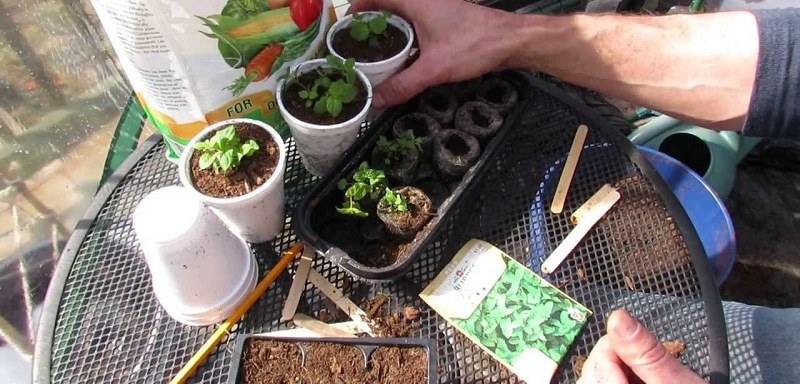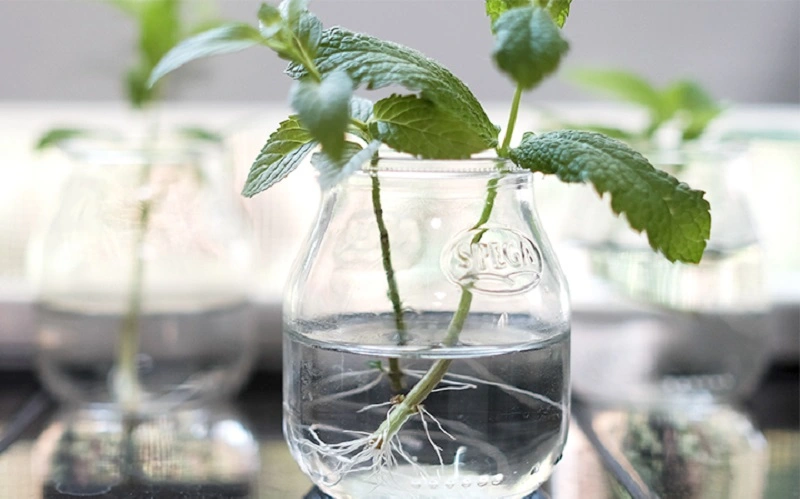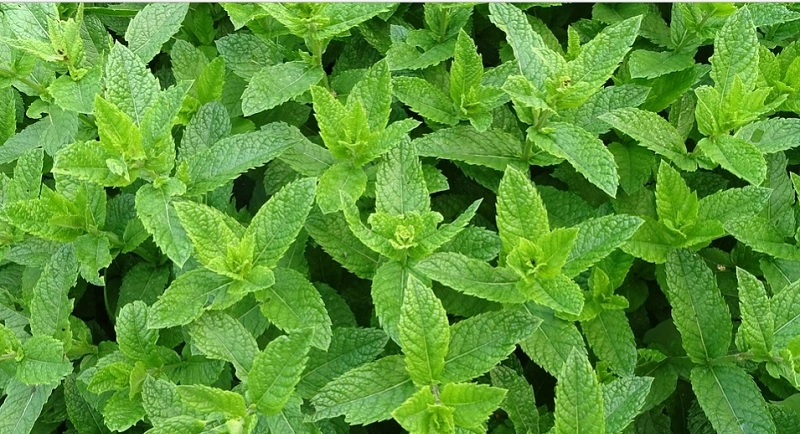Everyone in his life drank peppermint tea, there are so many of them in our lives, and what are its benefits?
Today man knows about three hundred species of mint, but about 20-25 species of this plant are widespread.
The most famous is peppermint, which is often used for medicinal purposes. This variety is a cultivated plant derived from a cross between garden and water mint.
Peppermint is a perennial plant of the Deaf Nettle family. Stem of peppermint quadrangular, hollow, about one meter high. Leaves ovate-oblong with teeth at the edges, and the root is horizontal and woody. Flowering of this plant begins in June and lasts until September. Peppermint stems and leaves, which need to be collected before flowering, are valued the most, as it is at this time that the plant has the most essential oil – menthol.
In the chemical composition of mint, the main element is menthol.
About 2.5% of menthol is contained in the leaves, in inflorescences its amount reaches 4-6%. Mint has always been considered a medicinal plant. Decoctions and infusions of mint can be used externally and internally.
Useful properties of peppermint
Be sure to consider the beneficial properties of mint in the treatment of diseases such as sore throat, bronchitis, pharyngitis and rhinitis. It has analgesic and vasodilating effects. Used to eliminate nausea, improve digestion, flatulence, asthma, nervous disorders, inflammatory processes in the lungs and bronchi, gynecological, cardiovascular, colds, spasms, migraines, gallstones.
Menthol, which is found in sufficient quantities in mint, is used to make mint essence. It is added to colognes, toothpastes, elixirs for oral care. In addition, various peppermint drops, ointments, gastric tablets are made from peppermint oil.
Mint is an excellent remedy for skin diseases, its decoction helps to relieve irritation and itching.
Contraindications to the use of peppermint
Do not use in infants, as menthol may cause depression or respiratory arrest. It is advisable to refrain from the use of mint in the treatment of children under 5 years. In addition, mint is contraindicated for allergy sufferers, pregnant and lactating women, as well as people with low blood pressure and low venous vascular tone, with low gastric acidity.

Reproduction of peppermint seeds
Mint can be grown from seed. Cuttings and rhizomes obtained from an adult bush are more often used for further propagation. It will take less time to care for them, and they will grow faster than seedlings. Seedlings are obtained from mint seeds, which are then planted in open ground.
Their sowing is carried out in mid-spring. Because they are very small, it is more convenient to use a stick with a pointed end during the procedure, which is periodically soaked in water. You can take a special syringe for seeds. The container for seedlings should be wide and shallow. It is filled with nutrient substrate. When sowing mint seeds, the seeds are not deepened, but only lightly (maximum 5 mm) pressed into the soil. Then the food film is stretched on the planting container. It should be placed in the sun, you can even put on an unglazed balcony, if it’s warm outside.
To germinate mint seeds, the air must be warmed to 21-24 ° C. When the seedlings hatch, care for them will include only regular watering. After they harden, they are dipped into individual pots and placed in a cool place. Seedlings are planted in open ground closer to the end of May, when they will grow 3-5 pairs of leaves. Growing mint at home is also widely practiced. Planting seeds can be carried out directly on the beds, but it is not very convenient because of their small size.

Other methods of reproduction
Peppermint is propagated by cuttings or parts of the rhizome. Both methods allow young bushes to retain all the properties of the mother plant. Peppermint cuttings can be cut when they have 5 leaves and a renewal bud is formed. Their length should be 7 cm. They should be planted in a prepared bed, mint cuttings sprinkled with soil and abundantly watered. Their implementation will not take much time. Popular and another way. Cut cuttings are placed in a container with water and kept in it until the roots appear.
They do not need any care at this time. You will only need to add water from time to time as it evaporates. Then the cuttings are planted in beds with an interval of 20-30 cm If you want to get pieces of rhizome of mint, it is removed from the ground and slightly dried. The distribution is carried out so that each part consisted of 10-12 nodes. The resulting rhizomes are placed in shallow (8-10 cm) holes. Make them at a distance of 30-40 cm from each other. When planting a plant, a handful of humus is thrown into the hole.

